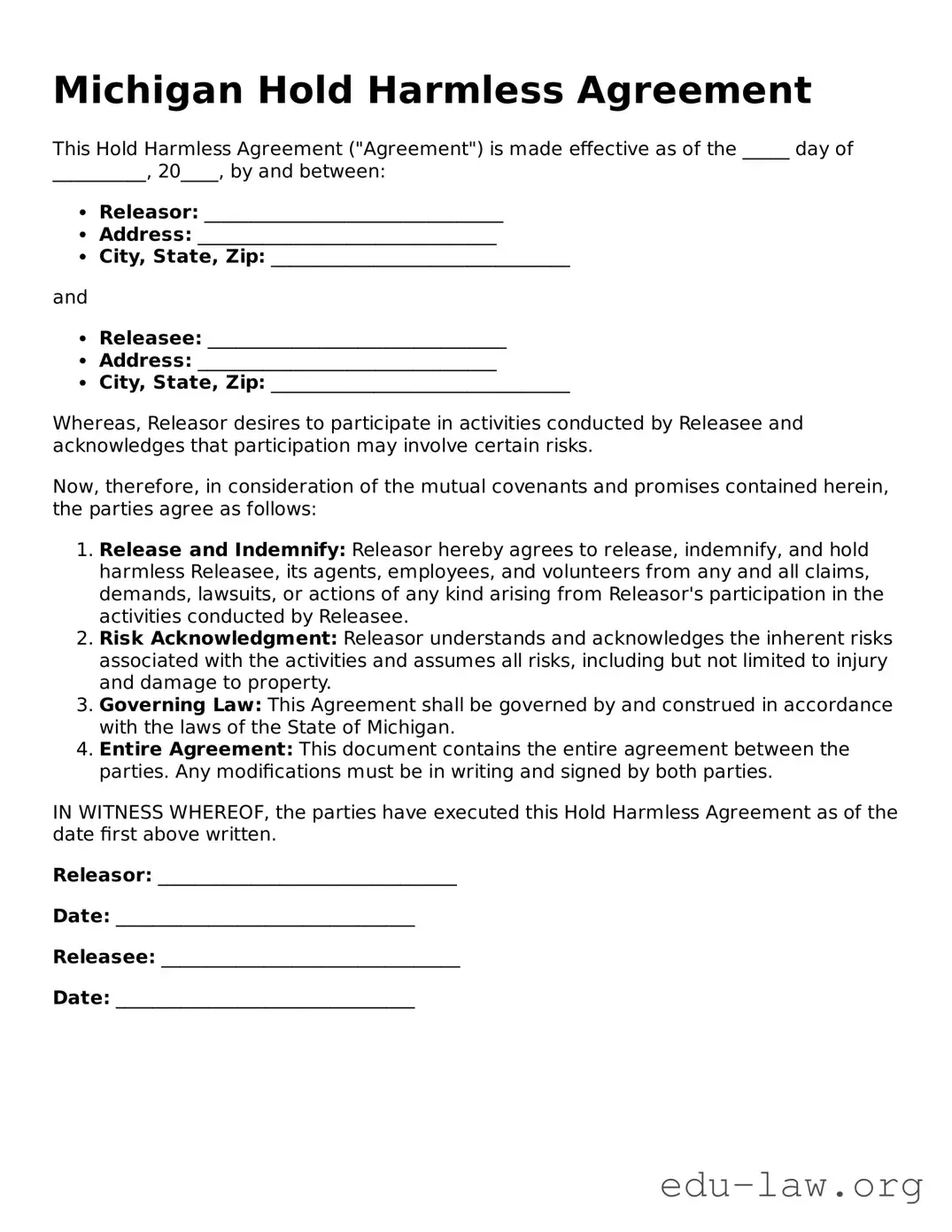What is a Hold Harmless Agreement in Michigan?
A Hold Harmless Agreement is a legal document that protects one party from liability for any damages or injury that may occur during a specified activity or event. In Michigan, this agreement is commonly used in various scenarios, such as rentals, events, and construction. By signing, one party agrees not to hold the other responsible for certain risks.
Who should use a Hold Harmless Agreement?
This agreement is beneficial for anyone engaging in activities that could lead to potential injuries or damages. This includes property owners, event organizers, contractors, and service providers. It helps to clarify responsibilities and can provide peace of mind for both parties involved.
Is a Hold Harmless Agreement legally binding in Michigan?
Yes, a Hold Harmless Agreement can be legally binding in Michigan, provided it is properly drafted and signed by the involved parties. To ensure that it is enforceable, the agreement should clearly outline the rights and responsibilities of each party and be signed voluntarily without undue pressure.
What should be included in a Hold Harmless Agreement?
An effective Hold Harmless Agreement should include the names of the parties, a description of the activities, the specific liabilities being waived, and any limitations of the agreement. Additionally, it should state that the parties understand the risks involved and accept them voluntarily. Clear language helps prevent misunderstandings.
Can a Hold Harmless Agreement cover all types of liability?
No, a Hold Harmless Agreement cannot cover all types of liability. Some liabilities, such as those arising from gross negligence or willful misconduct, may not be waived. Courts may also limit the enforceability of these agreements, especially if the language is overly broad or ambiguous.
How can I ensure my Hold Harmless Agreement is effective?
To enhance the effectiveness of your Hold Harmless Agreement, consider consulting with a legal professional. They can help ensure that the agreement meets Michigan's legal requirements and adequately protects your interests. Clear, precise language is essential in drafting this document.
Can I modify a Hold Harmless Agreement once it is signed?
Modifying a Hold Harmless Agreement after it is signed is possible, but both parties must agree to the changes in writing. It is best to clearly outline any revisions and have both parties sign the amended agreement to avoid confusion in the future.
